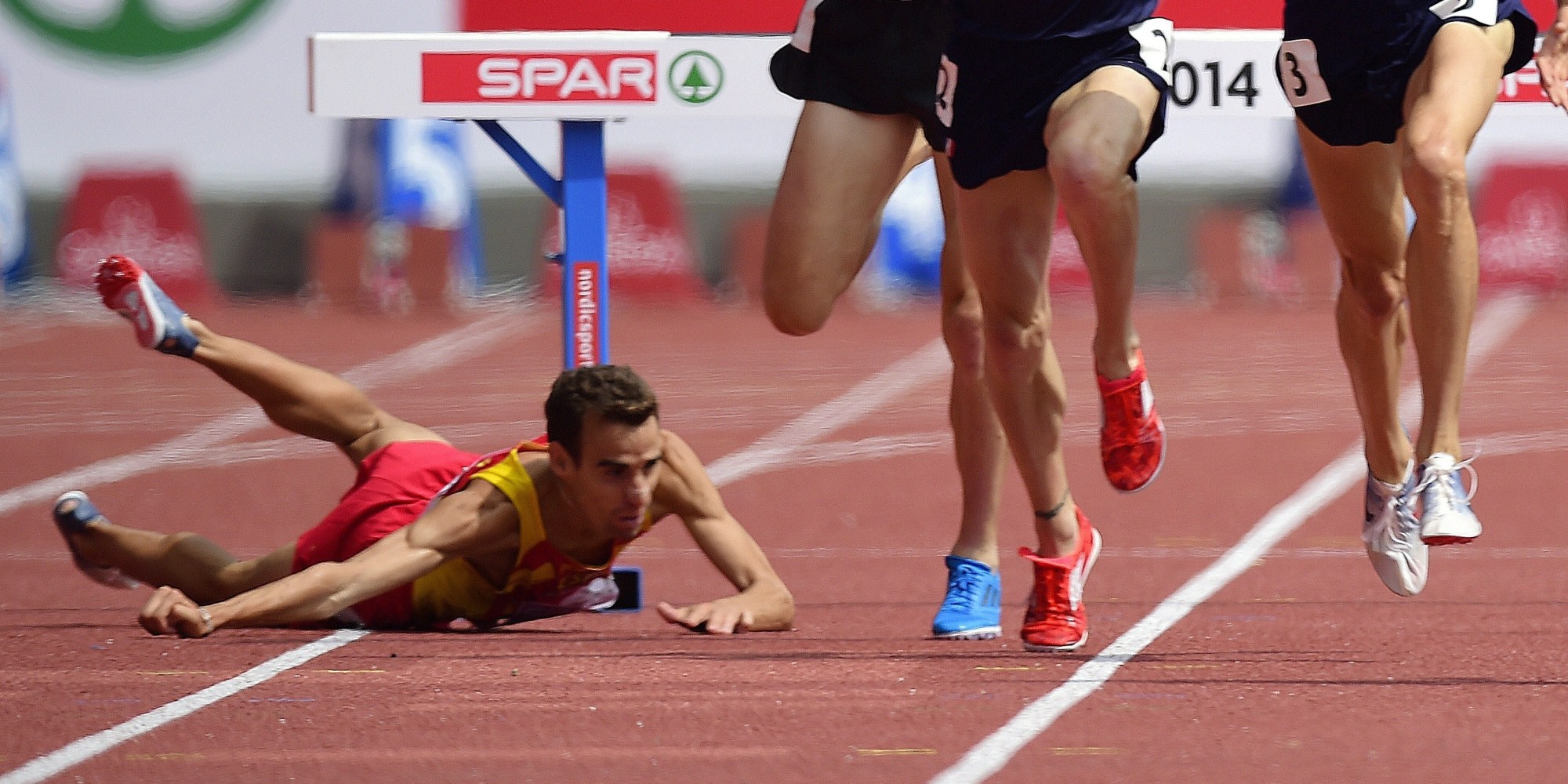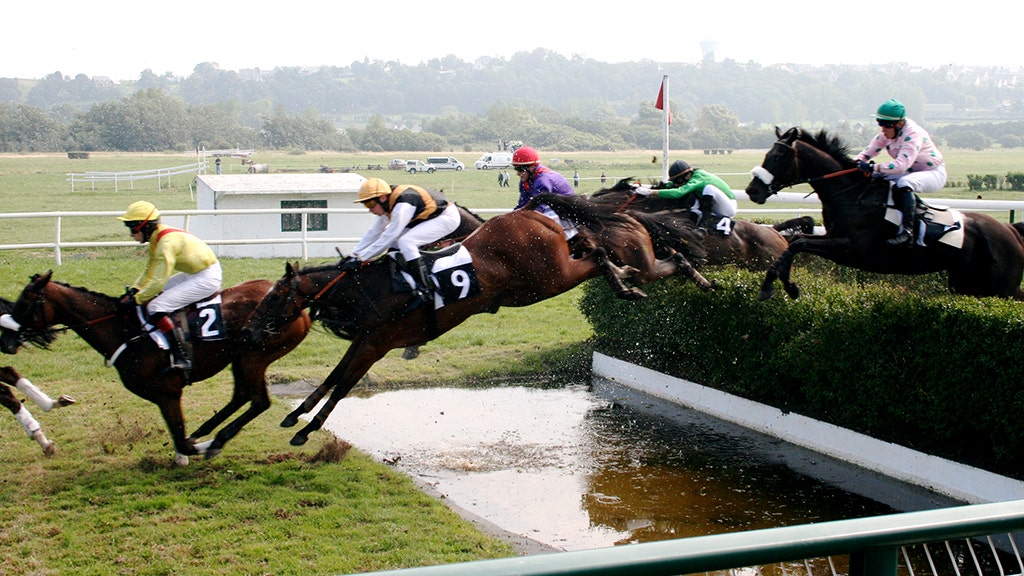The Mechanics of a Steeplechase Fall

Steeplechase racing is a thrilling spectacle, but it also carries inherent risks. Falls are a common occurrence, often resulting in injuries for both horse and rider. Understanding the mechanics of a steeplechase fall is crucial for appreciating the dangers involved and the factors that contribute to these incidents.
Common Causes of Falls
Falls in steeplechase racing can be attributed to a combination of factors, including obstacles, terrain, and rider error.
- Obstacles: The signature feature of steeplechase racing, the obstacles, are often the primary cause of falls. Horses can stumble or misjudge the approach to a fence, leading to a fall. The height and design of the fences, as well as the horse’s experience and training, play a significant role in the likelihood of a fall.
- Terrain: Steeplechase courses often feature uneven terrain, including hills, ditches, and turns. These variations can cause horses to lose their footing, leading to a fall. The condition of the ground, particularly in wet or muddy conditions, can also contribute to instability.
- Rider Error: Rider errors, such as poor riding technique, misjudging the pace, or losing control of the horse, can also lead to falls. Inexperience, fatigue, or a lack of communication between rider and horse can all contribute to a fall.
The Biomechanics of a Fall
When a horse falls in a steeplechase race, a complex interplay of forces is involved.
- Momentum: The horse’s momentum, combined with the rider’s weight, creates significant forces that must be absorbed during a fall. The impact of the fall can be further amplified by the speed at which the horse is traveling.
- Impact: The impact of the fall can cause a variety of injuries, including fractures, dislocations, and soft tissue damage. The severity of the injuries depends on the height of the fall, the angle of impact, and the surface on which the horse and rider land.
- Force Distribution: The force of the fall is distributed throughout the horse’s body, with the legs and spine bearing the brunt of the impact. The rider’s position and the protective gear worn can influence how the forces are distributed.
Types of Falls, Steeplechase fall
Falls in steeplechase racing can be categorized by their cause and impact.
- Fence Falls: These are the most common type of fall, occurring when a horse stumbles or misjudges the approach to an obstacle. The horse may trip over the fence, or it may jump too high or too low, leading to a fall.
- Terrain Falls: These falls occur when a horse loses its footing on uneven terrain, such as a hill, ditch, or turn. The horse may slip or stumble, leading to a fall. The condition of the ground can play a significant role in terrain falls.
- Rider Error Falls: These falls are caused by rider error, such as poor riding technique, misjudging the pace, or losing control of the horse. The rider may pull the horse too hard, or the horse may react to a rider’s movement in a way that leads to a fall.
Impact of Steeplechase Falls on Riders and Horses

Steeplechase falls are a serious risk for both riders and horses, and can have significant short-term and long-term health consequences. These falls are unique due to the combination of high speeds, challenging terrain, and the presence of fences, all of which increase the potential for severe injuries.
Rider Injuries
Rider injuries in steeplechase falls can range from minor sprains and bruises to life-threatening head injuries and spinal cord damage.
The most common injuries sustained by riders include:
- Concussions
- Fractures
- Ligament and tendon tears
- Soft tissue injuries
In more severe cases, riders may experience:
- Spinal cord injuries
- Traumatic brain injuries
- Internal bleeding
The severity of injuries depends on various factors, including the speed of the horse at the time of the fall, the impact of the fall, and the rider’s protective gear.
Horse Injuries
Steeplechase falls can also result in serious injuries for horses, which can be both immediate and long-term.
Common injuries include:
- Leg fractures
- Ligament and tendon tears
- Soft tissue injuries
- Concussions
Severe injuries can include:
- Spinal cord injuries
- Internal bleeding
- Organ damage
Treatment for horse injuries depends on the severity and location of the injury. It can range from rest and medication to surgery and rehabilitation.
Risk Comparison with Other Equestrian Disciplines
Steeplechase is considered one of the riskiest equestrian disciplines due to the combination of high speeds, challenging terrain, and the presence of fences.
Compared to other equestrian disciplines, such as dressage, show jumping, and eventing, steeplechase has a higher incidence of serious injuries. This is because steeplechase horses are typically running at speeds of up to 35 miles per hour over challenging terrain, including jumps, which increases the potential for falls and injuries.
For example, a study by the University of Pennsylvania School of Veterinary Medicine found that steeplechase racing had a significantly higher incidence of catastrophic injuries, including fractures and tendon tears, compared to other equestrian disciplines.
Preventing and Mitigating Steeplechase Falls

Steeplechase racing is a thrilling sport, but it also comes with inherent risks. Falls are a common occurrence, and they can have serious consequences for both riders and horses. While some falls are unavoidable, there are many steps that can be taken to improve rider safety and reduce the risk of falls. These measures include rider training, course design, and the use of appropriate safety equipment.
Rider Training and Skills
Rider training plays a crucial role in preventing falls. Steeplechase riders must possess a high level of skill and experience to navigate the challenging courses and control their horses. Training programs should focus on developing essential skills, including:
- Horse Handling: Riders need to be able to control their horses effectively, particularly when jumping obstacles. This involves understanding horse behavior, using appropriate riding techniques, and maintaining a secure seat.
- Jumping Technique: Proper jumping technique is essential for clearing obstacles safely. Riders should be trained to approach jumps at the correct angle, maintain balance, and use their body weight to assist the horse over the obstacle.
- Emergency Procedures: Riders should be trained in emergency procedures, such as how to dismount safely in case of a fall and how to provide basic first aid to themselves or their horse.
- Course Knowledge: Riders need to be familiar with the course layout, including the location and type of obstacles. This knowledge helps them anticipate potential hazards and adjust their riding strategy accordingly.
Course Design and Obstacle Construction
Course design and obstacle construction are crucial factors in minimizing the likelihood of falls. Here are some key considerations:
- Obstacle Placement: Obstacles should be strategically placed to avoid creating blind spots or areas where horses could collide. This means ensuring adequate spacing between obstacles and providing clear lines of sight for riders.
- Obstacle Design: Obstacles should be designed to be safe and stable. They should be constructed from materials that are durable and resistant to breakage. The design should also minimize the risk of horses tripping or getting their legs caught.
- Course Maintenance: The course should be regularly maintained to ensure that obstacles are in good condition and that the ground is firm and free of debris. This helps to reduce the risk of falls caused by loose footing or damaged obstacles.
Safety Equipment
- Helmets: Helmets are essential for protecting riders’ heads from injury. Steeplechase helmets should meet specific safety standards and provide adequate protection in the event of a fall.
- Body Protectors: Body protectors are designed to cushion the rider’s torso and protect them from impact injuries. They can be particularly useful for protecting the spine, ribs, and internal organs.
- Boots and Stirrups: Steeplechase riders wear special boots and stirrups that are designed to provide a secure grip and reduce the risk of foot entrapment. These boots often have a special release mechanism that allows the rider to quickly disengage their foot in case of a fall.
| Safety Equipment | Benefits |
|---|---|
| Helmet | Protects the rider’s head from injury. |
| Body Protector | Cushions the rider’s torso and protects them from impact injuries. |
| Boots and Stirrups | Provide a secure grip and reduce the risk of foot entrapment. |
A steeplechase fall can be a jarring experience, leaving you with a mix of adrenaline and bruised pride. While you recover, perhaps consider a visit to a leather chair repair shop to restore that cherished piece you’ve been meaning to fix.
After all, a well-maintained chair provides the perfect place to reflect on the thrill of the race, even if it wasn’t quite the victory you hoped for.
A steeplechase fall can be a brutal sight, a sudden and unexpected end to a race. The impact can be jarring, the recovery long. But even with those risks, athletes still push themselves to the limit, driven by the thrill of competition.
The 3000m steeplechase, a grueling test of endurance and agility, has seen its share of falls, but also incredible triumphs. The history of the 3000m steeplechase at the Olympics is a testament to the resilience of these athletes, who face the challenge of the water jump and the high hurdles with courage and determination.
It’s a race that truly captures the essence of overcoming obstacles, and those falls, while unfortunate, are just a part of the journey.